Companion planting: Lynda Hallinan knows the right plants (and gardening bestie) make a garden thrive
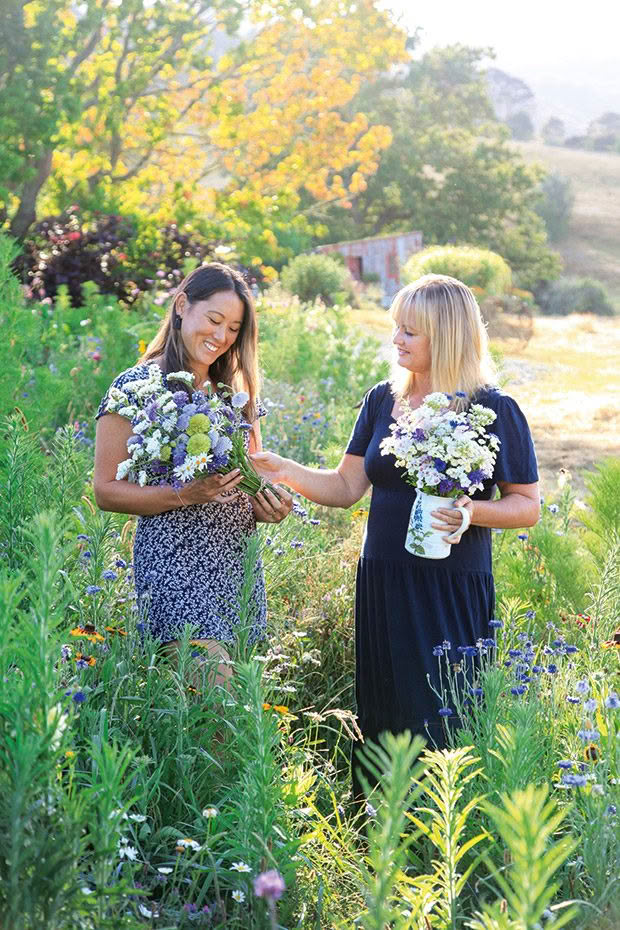
Gardening besties Deanna Robinson and Lynda in Lynda’s cottage wildflower meadow, competively compare posies picked from their respective gardens.
Two keen country gardeners share a friendly rivalry over flowers, foliage and finding ways to foil rabbits.
Words: Lynda Hallinan Photos: Sally Tagg
Birds of a feather don’t necessarily flock together — in my chook run, wings flap when the brown shavers and lavender araucanas get within cooee of each other — but gardeners have a knack for rooting out kindred spirits.
New Zealand’s earliest European settlers wasted no time starting horticultural societies to unearth fellow green thumbs. In comparison, I met my gardening bestie, Deanna Robinson, over a box of plastic dinosaurs at our local playgroup. While our boys, a pair of budding preschool palaeontologists, bonded over stegosaurs and sauropods, we talked about plants.

This November, Deanna and I opened our gardens for the Franklin Hospice Garden Ramble. They couldn’t be more different. Hers is contemporary and structured with an artful backdrop of shrubs and clipped hedges, whereas mine is a hot mess of cottagey frippery (pretty much whatever takes my fancy at the garden centre).
Nonetheless, a passion shared is a passion squared. Not a day goes by without us chatting about the goings-on in our gardens, be it blooming successes or rants about what the blasted rabbits have eaten this time. And as we skite about our plants on Facebook and Instagram, it makes me wonder what last century’s horticultural heroes would have made of our social media habits.
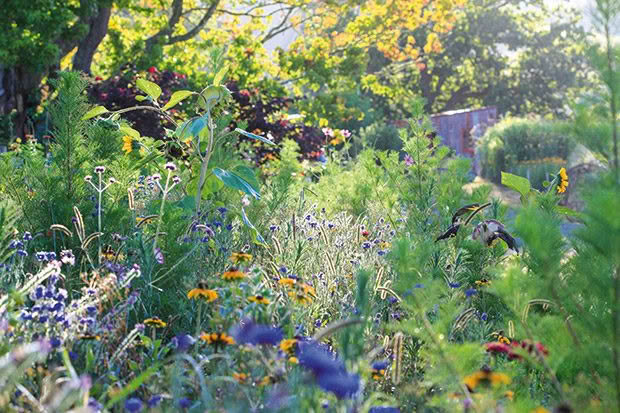
Would Gertrude Jekyll have hashtagged Munstead Wood’s hardy borders or tiptoed through the tulips for TikTok views? Would Lotusland founder Ganna Walska have swiped right on Tinder in search of a well-to-do seventh husband to fund her extravagant Californian garden? Would Vita Sackville West have sent selfies from Sissinghurst Castle to Virginia Woolf? (Vita and Virginia had better things to flirt over than flowers. In 1933, upon hearing her lover was laid low with illness, Vita wrote, “I regret that you have been in bed, though not with me.”)
Before social media, gardening pals had to put pen to paper to cultivate common ground. In Two Gardeners: A Friendship in Letters, Katharine S. White (wife of Charlotte’s Web author E.B. White) and North Carolina gardening columnist Elizabeth Lawrence complain to each other about chipmunks chomping on crocus corms and inopportune snowstorms.
These ladies kept up a chatty correspondence for 20 years but apparently only ever met once. “I wish you lived next door,” wrote Elizabeth to Katharine. “I would fill your garden up.”
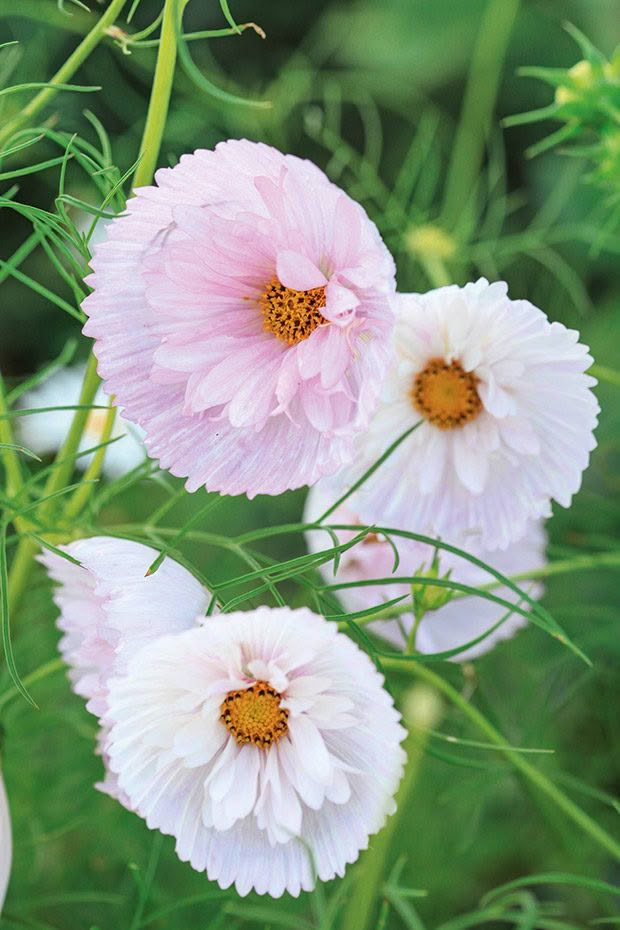
Cosmos ‘Cupcakes’.
Deanna’s garden is a three-minute drive from mine, and many a plant has come along for the ride. Not only does she nurse my sick houseplants back to health, but we share cuttings, seeds, surplus seedlings, trailers and our husband’s power tools. (Her husband Steve, a builder, must rue the day he installed north-facing floor-to-ceiling windows the length of their new house. At last count, 151 houseplants trailed from the windowsills and 95 punnets of seedlings sprouted on their living-room floor.)
The erudite Frenchman Marcel Proust described feel-good friends as “charming gardeners who make our souls blossom”. When I caught Covid-19 as a birthday gift, Deanna brought me flowers from her garden, chocolate cake from her kitchen and a hand-painted card in which she cheekily reminded me that I would be 50 before she hits 40. (In revenge, I talked her into buying her first old-lady plants: a trio of frumpy fuchsias, no less.)
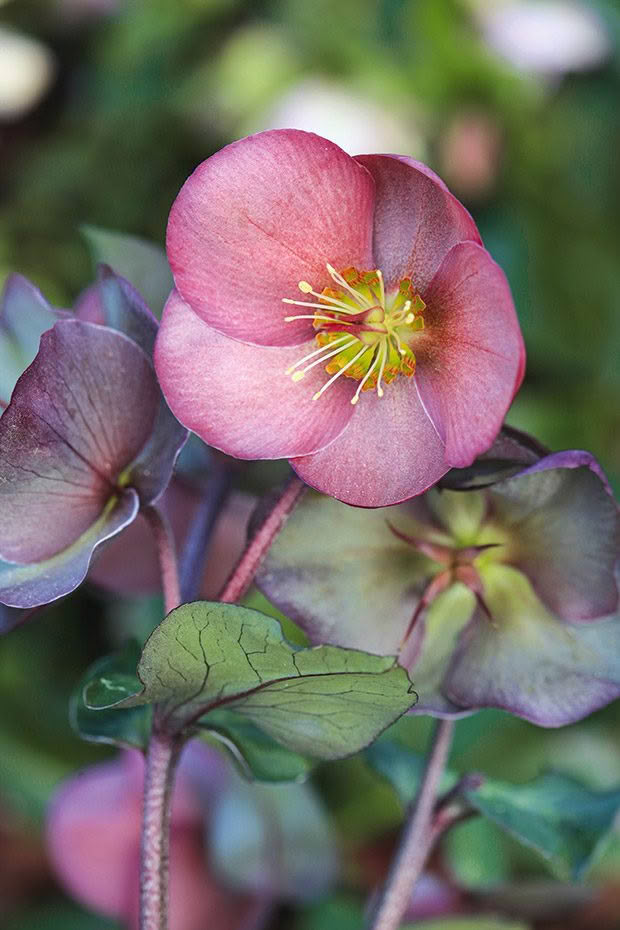
Great gardening minds need not always think alike. In Dear Friend and Gardener, British gardening behemoths Beth Chatto and Christopher Lloyd reveal how their friendship was sparked by his badmouthing of bergenias. Having written them off as “wretched and boring” in his book The Well-Tempered Garden, Beth wrote to him in their defence, and he invited her over for lunch.
Deanna and I have a quiet appreciation for bergenias, if only because the rabbits that plague both our plots leave them well alone. We also adore hellebores (again, bunnies don’t bother them) and share an intense dislike of bromeliads — though, given their contempt for our frosty climate, that’s no significant loss.
A couple of years ago, we both planted a grove of silver birches in our driveways. I forked out $50 a pop for fancy specimens of Betula utilis ’White Spire’, a grafted clone with bark so eerily white that a non-gardening friend asked if I’d spray-painted their trunks. At the same time, Deanna took pity on a wonky bunch of $10 bargains from a local tree nursery. Then she underplanted her trees with teeny-tiny self-sown baby hellebores. “Too small! Too sunny!” I said, imploring her to shift them. I swear they’ve thrived to spite me.
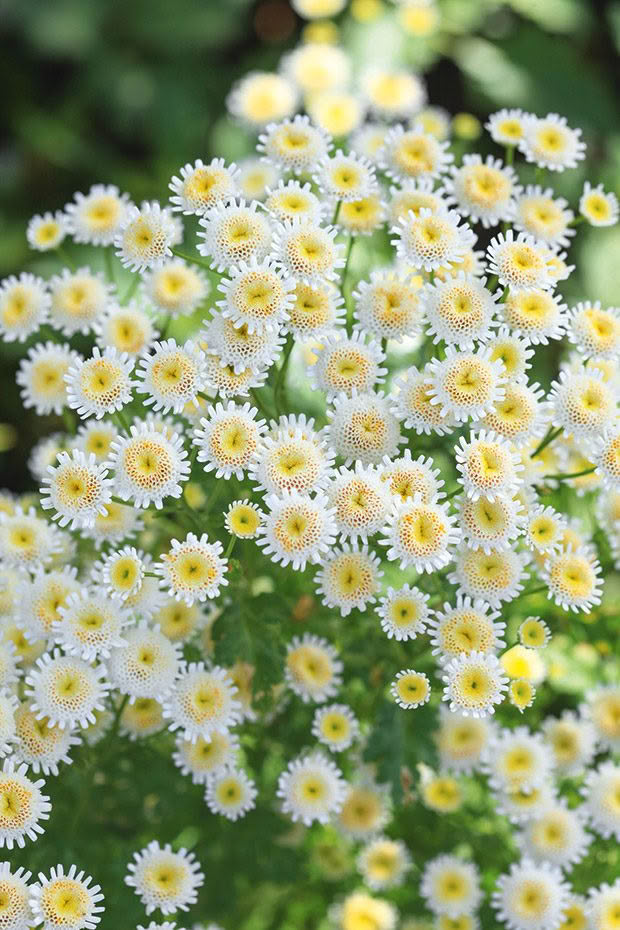
Deanna has also taught me that even ghastly ‘Spotted Leopard’ ligularias, gaudy lime heucheras and garish ‘Limelight’ wattles have a place (her garden, definitely not mine). Mind you, she’s no fan of my orange clivias (I have an entire hillside of them) or turquoise ixia.
Was she trolling me when I asked her to list her favourite plants, and she started with Viburnum ‘Summer Snowflake’ and the tufted flannel flower Phylica pubescens? She knows I’ve accidentally killed both.
I’m also ashamed to admit that the dainty touch-me-not plant (Mimosa pudica) that graced these pages in the last issue of NZ Life & Leisure has met an unhappy fate. I foolishly fried it to a crisp by parking its pot on top of the air-fryer on my kitchen bench. Meanwhile, its sibling, gifted to Deanna as a tiny seedling last summer, has grown into a small tree.
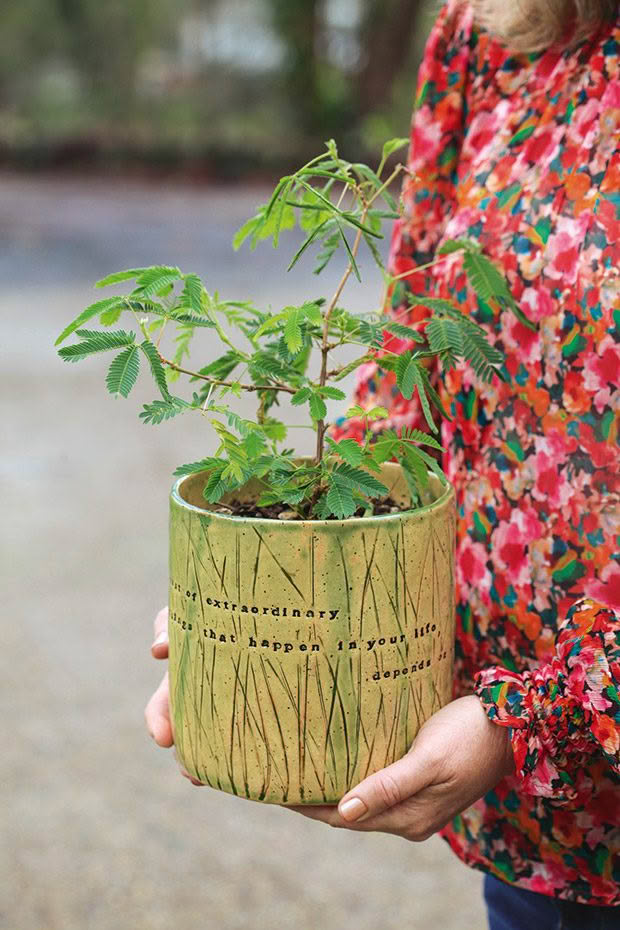
Lynda’s ill-fated Mimosa pudica (touch-me-not) from the September/October issue of NZ Life & Leisure.
Will I ever gazump her with my gardening prowess? Yes! I grow much better garlic! Last year my fat-bottomed bulbs were a joy to behold, but it was a hollow victory for Deanna has a dietary intolerance to alliums and couldn’t give a toss.
DOWN THE RABBIT HOLE
“When a flower grows wild, it can always survive,” sang Dolly Parton, who clearly didn’t have an issue with rabbits in the Great Smoky Mountains of East Tennessee. But when Lynda decided to commandeer a corner of her sheep paddock for a wildflower meadow last summer, she ringfenced it with chicken mesh first. A rabbit-proof fence should be at least 45 centimetres high (hares can nibble significantly higher) with the mesh bent into an L-shape at the bottom, partially buried to foil burrowing paws.
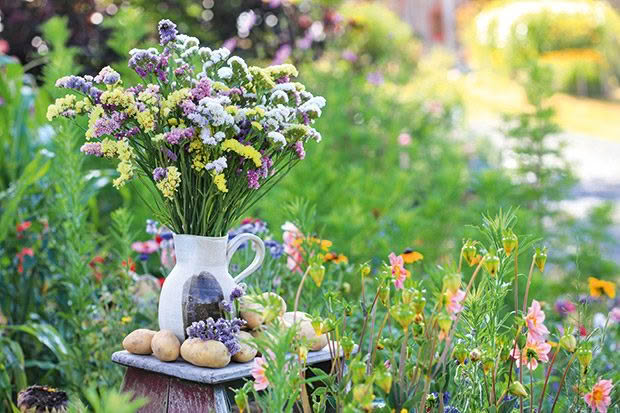
“Chicken mesh is effective but hardly aesthetic, so to cover it up, I planted an experimental spud and statice garden in front of the wire fence and ended up with the best crop of Agria potatoes I’ve grown in years (pictured above).”
Statice (Limonium sinuatum ‘Pacific Mix’) is predominantly grown for drying, with papery bracts that hold their colour, and it’s tough enough to hold its own amid paddock grasses.
Lynda’s list of other reliably rabbit-resistant flowers includes armeria, artemisia, astilbes, bee balm, begonias, bluebells, candytufts, catmint, daffodils, delphiniums, forget-me-nots, foxgloves, globe artichokes, hellebores (far left, top and below), hyssop, lamb’s ears, rugosa roses, sedums, spuds, snow-in-summer (Cerastium tomentosum), strawflowers, thyme and zinnias. She has also had luck with Tanacetum parthenium ’Selma Star’, a cottage charmer from Puriri Lane nursery in Drury. The beautiful blue lace flower, Didiscus caerulea, is a badly desirable cut flower. “Last summer, all my seedlings got eaten by rabbits, so when I saw it blooming at a plant nursery, I excitedly sent Deanna a photo. I was a bit miffed when she immediately replied with a photo of her didiscus flourishing like a weed under her washing line.”
WILD AT HEART
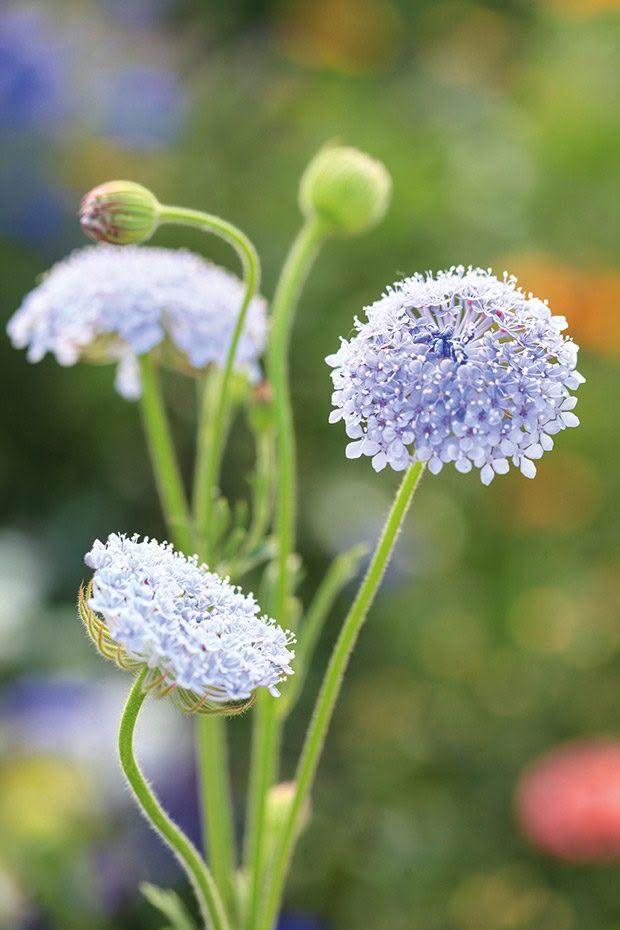
Authentic prairie-style wildflower meadows are nigh impossible to maintain in New Zealand conditions because pasture grasses rapidly infiltrate and overwhelm delicate seeding annuals. “My meadow would be more accurately described as a very messy annual flower bed that needs a ruthless weeding at the end of winter, followed by spring reseeding,” says Lynda.
She saves the seeds from her favourite easy-care cottage annuals, including cornflowers, ‘Blue Bedder’ echiums, the papery moons of honesty (Lunaria annua), larkspurs, nigella, Orlaya grandiflora, poppies and sweet peas. “I divvy them into preserving jars to sprinkle in spring between clumps of hardy perennials, including dahlias, penstemons, rudbeckias, salvias and the pretty miniature chrysanthemum, Tanacetum parthenium ’Selma Star’.
Love this story? Subscribe now!
 This article first appeared in NZ Life & Leisure Magazine.
This article first appeared in NZ Life & Leisure Magazine.
